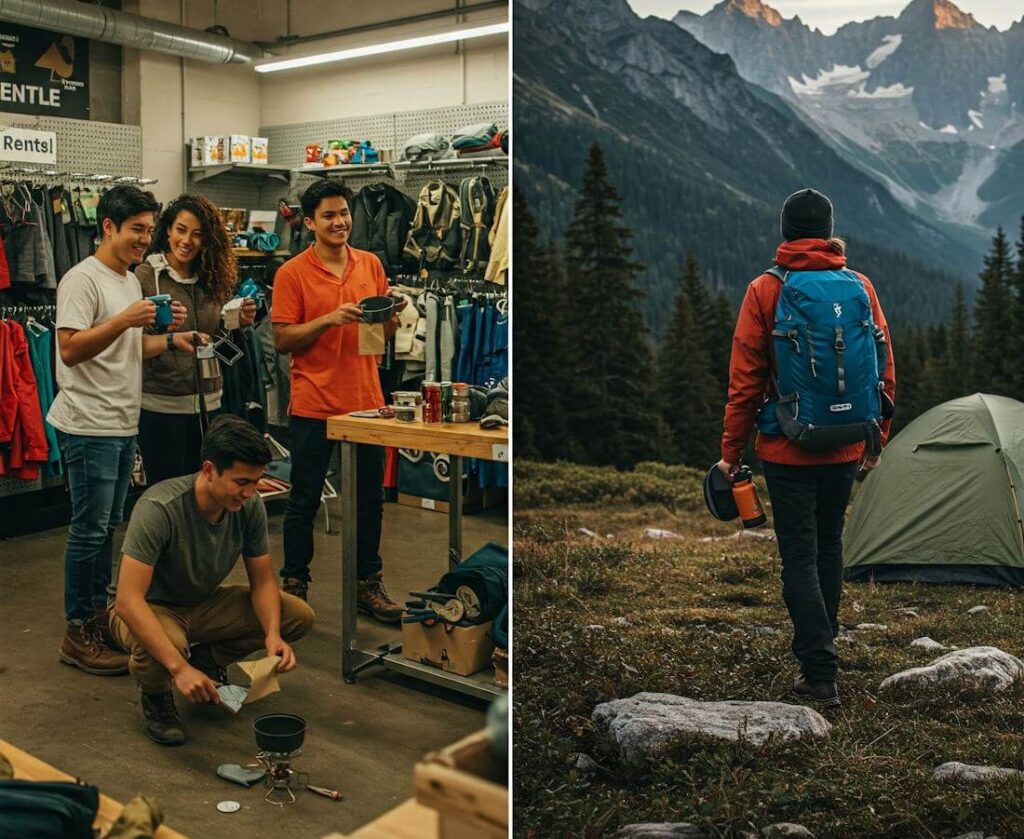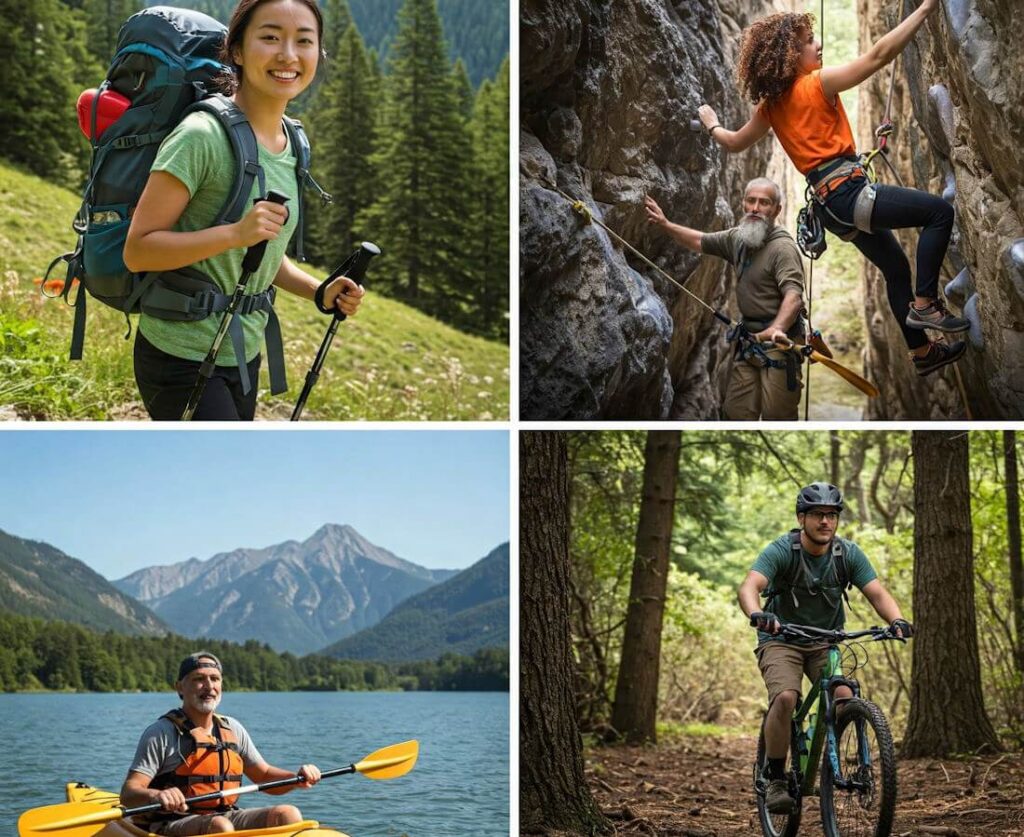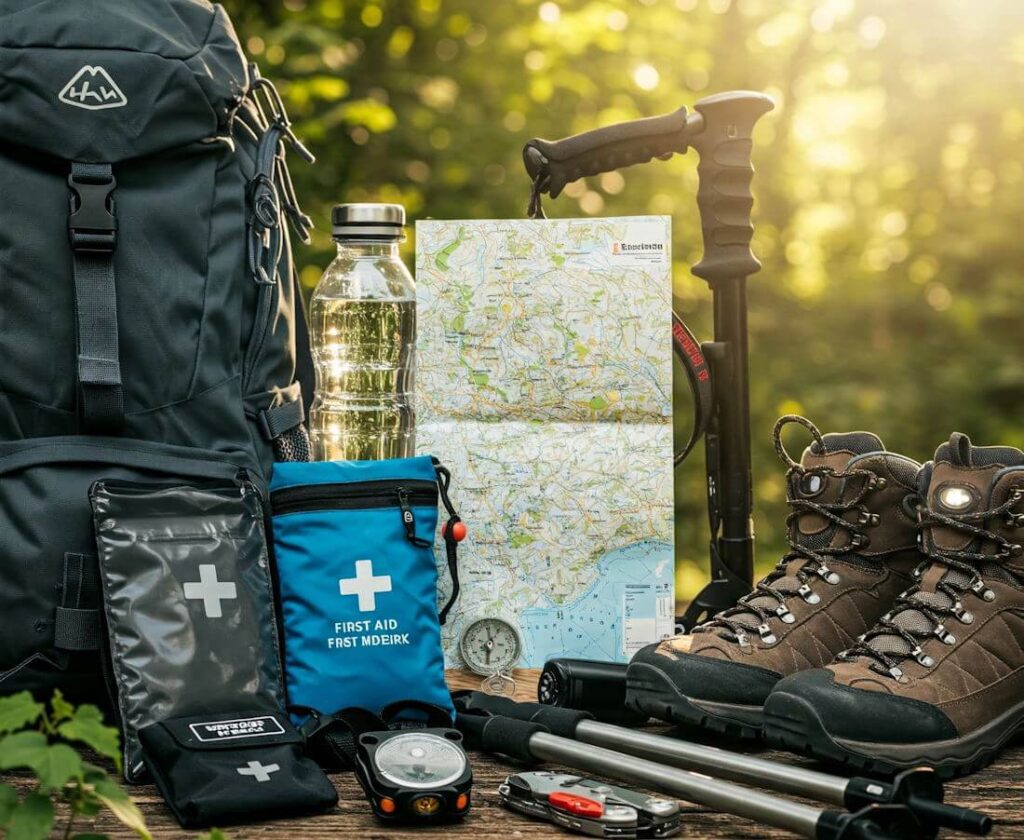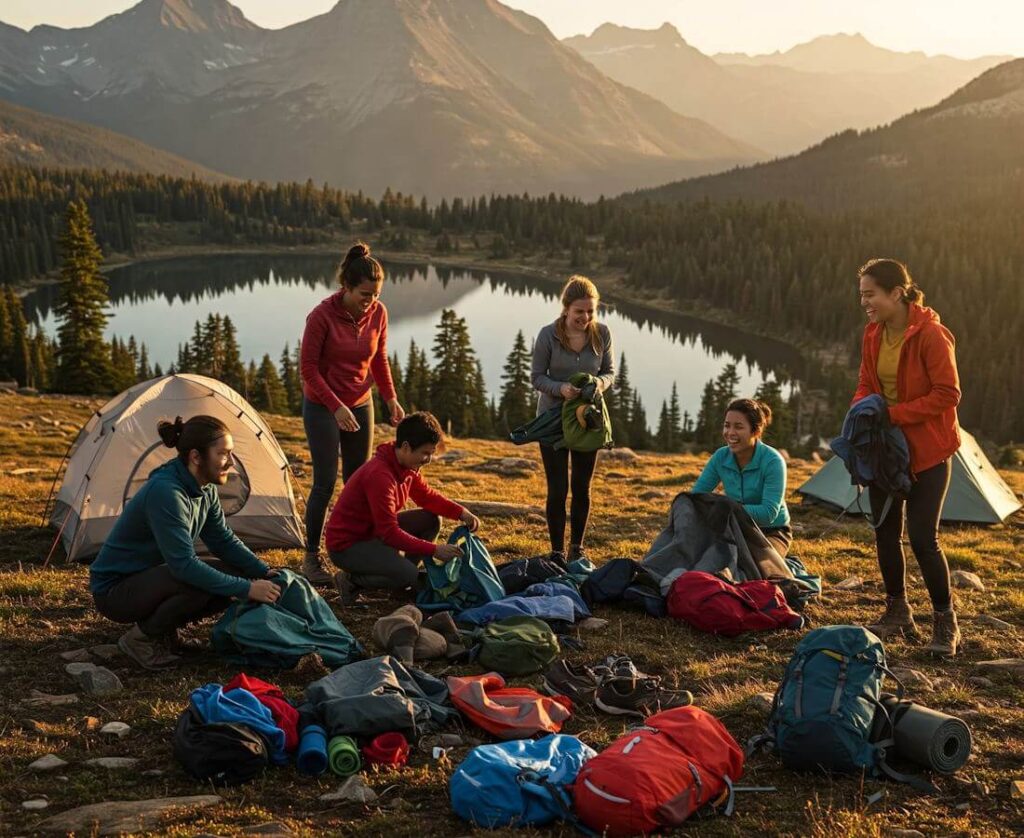Introduction to Outdoor Equipment Choices
When engaging in outdoor activities such as camping, hiking, or skiing, having the right equipment is crucial for an enjoyable and safe experience. The selection of outdoor gear can significantly influence not only the overall outcome of a trip but also personal comfort and safety. The appropriate equipment enhances performance, reduces the risk of injury, and provides assurance in challenging environments. Therefore, understanding the various options for acquiring outdoor equipment is essential for enthusiasts and novices alike.
As outdoor activities gain popularity, the debate between renting and buying equipment has become increasingly relevant. Individuals often face the dilemma of whether to invest in their own gear or to opt for rental services that can provide high-quality products without the long-term financial commitment. Each option presents its own set of advantages and disadvantages, depending on factors such as frequency of use, budget, and the specific requirements of each activity. For instance, a passionate skier may choose to purchase equipment for personal convenience and performance consistency, while a casual hiker might find renting practical for occasional excursions.
Moreover, the accessibility of rental services has expanded, with many local outdoor shops offering a range of choices that cater to diverse needs. This development not only makes it easier for individuals to try new activities but also minimizes the upfront costs associated with purchasing high-quality gear. Understanding the nuances of both renting and buying outdoor equipment allows individuals to make informed decisions aligned with their preferences and lifestyle. As we delve deeper into this topic, we will explore the associated pros and cons of each approach, guiding readers toward the option that best suits their outdoor pursuits.
Understanding Rental Services
Rental services for outdoor equipment have emerged as a practical solution for both occasional adventurers and seasoned enthusiasts. These services typically offer a comprehensive range of products such as tents, bicycles, kayaks, climbing gear, and skiing equipment, catering to diverse outdoor activities. By providing access to high-quality gear without the need for ownership, rental services enable individuals to experience different activities without the financial investment associated with purchases.
One of the key advantages of renting outdoor equipment is its cost-effectiveness. Rental pricing structures can vary widely based on the type of equipment, duration of rental, and demand factors. For example, most rental companies offer daily, weekend, or weekly rates, allowing customers to choose a plan that best fits their schedule and budget. This flexibility is particularly beneficial for those who engage in outdoor activities sporadically, as it eliminates the need to invest significant sums in gear that may not be used regularly.
Another notable benefit is the convenience of not having to deal with maintenance, storage, or transportation of the equipment. Rental services typically handle the upkeep and ensure that all items are in optimal condition, allowing renters to focus on enjoying their outdoor experience. Furthermore, for outdoor enthusiasts exploring new activities or trying out different equipment types, rentals provide an excellent opportunity to assess suitability before making a commitment to buy.
For frequent adventurers, renting equipment also offers the advantage of accessing the latest models and technologies regularly, ensuring that they can enjoy enhanced performance and safety. Whether it’s testing new gear or selecting options tailored to specific trips, rental services provide unparalleled flexibility and accessibility for outdoor lovers. As such, understanding the offerings and benefits of rental services is essential for anyone looking to enhance their outdoor adventures economically and efficiently.
The Advantages of Renting Outdoor Equipment
Renting outdoor equipment presents numerous advantages that cater to a variety of users, particularly those who may not frequently engage in outdoor activities. One of the most significant benefits is cost savings. For individuals or families who only partake in outdoor adventures occasionally, renting can be far more economical than purchasing expensive gear that would subsequently spend most of its time in storage. For instance, a family planning a yearly camping trip can easily rent tents, sleeping bags, and cooking gear, rather than investing in products that they would rarely use throughout the year.
Another noteworthy benefit of renting outdoor equipment is the elimination of maintenance and storage concerns. Equipment such as kayaks, mountain bikes, and climbing gear often require regular upkeep to ensure they remain in safe and optimal condition. By renting, users can bypass the responsibilities of maintenance and repairs, allowing them to focus on enjoying their experience. Furthermore, those living in urban environments or smaller homes may have limited space available for storing large equipment. Renting provides a practical solution to this challenge, as it requires no long-term commitment to storage.
Access to high-quality and specialized gear is another advantage of renting outdoor equipment. Certain activities, like rock climbing or snowboarding, require specialized items that can be prohibitively expensive to buy outright. Rental services often stock premium brands and the latest models, enabling renters to experience top-tier equipment without the financial burden of purchasing. Testimonials from avid outdoor enthusiasts express satisfaction with being able to use superior gear when renting, enhancing their overall adventure while avoiding the hefty price tag that accompanies buying.
In light of these factors, renting outdoor equipment emerges as a compelling choice for both casual adventurers and dedicated enthusiasts alike.
The Drawbacks of Renting Outdoor Equipment
While renting outdoor equipment can be a cost-effective solution for occasional adventurers, there are significant drawbacks that potential renters must consider. One primary concern is the availability of the desired gear. During peak seasons, such as summer for camping or winter for skiing, popular rental items may be in high demand. This can lead to a lack of options, causing renters to settle for gear that may not meet their needs or preferences. Consequently, this limitation could detract from the overall experience of using the equipment.
Another issue relates to damage fees and rental terms, which can become unexpectedly costly. Rental agreements often include stipulations regarding wear and tear, with additional fees for minor damages or late returns that can quickly accumulate. Even when utilizing equipment with care, renters may face disputes regarding the condition of the gear upon its return. This aspect can lead to frustration and financial burdens, raising the total cost of renting.
The uncertainty regarding the quality and maintenance of rented gear presents another layer of concern. If rental companies do not regularly inspect and maintain their equipment, users may find themselves with subpar items that can potentially impact their safety and enjoyment. Instances of receiving dirty, damaged, or inaccurately described items have been reported, leading to dissatisfaction among renters. Reflecting on personal experiences, it is clear that choosing the wrong rental company can result in regrets, such as stress during an otherwise pleasurable outdoor activity.
Ultimately, while renting can provide convenience and flexibility, these challenges must be factored in when assessing whether it is the best option for one’s outdoor adventures. Evaluating personal circumstances and preferences is crucial to making an informed decision that aligns with individual needs.
The Case for Buying Outdoor Equipment
When it comes to engaging in outdoor activities, one significant decision individuals face is whether to rent or buy their equipment. For frequent adventurers, purchasing outdoor gear often proves to be a wise investment. There are several compelling reasons that highlight the benefits of buying outdoor equipment, particularly for those who frequently indulge in camping, hiking, and other outdoor pursuits.
One of the foremost advantages of purchasing outdoor gear is the potential for long-term cost savings. While the initial investment may be higher than renting, owning equipment allows enthusiasts to avoid repetitive rental fees that can accumulate over time. For example, if someone embarks on multiple hiking trips throughout the year, the costs of renting can quickly surpass the purchase price of quality gear. By buying, users can enjoy their equipment for years to come, making it a sound financial decision in the long run.
Moreover, owning outdoor equipment ensures greater consistency in quality and fit. Many outdoor enthusiasts prefer having gear tailored to their specific needs and preferences. When individuals own their equipment, they have the opportunity to select items that are perfectly suited to their body type and style of adventure. This level of customization can greatly enhance the overall experience, leading to more enjoyable excursions.
Additionally, there is an emotional value associated with owning outdoor equipment. Many adventurers develop a sense of attachment to their gear, as it often accompanies them on memorable journeys. This connection can foster a deeper appreciation for outdoor activities, making adventures more meaningful as adventurers reflect on the experiences tied to their personal equipment. Therefore, for those who actively engage in outdoor activities, buying outdoor equipment is a decision that can provide both financial benefits and emotional fulfillment.
The Disadvantages of Buying Outdoor Equipment
Investing in outdoor equipment can often appear as a financially sound decision; however, it brings a number of disadvantages that potential buyers must consider. One of the primary challenges associated with purchasing outdoor gear is the initial high investment cost. Acquiring quality equipment often requires a significant upfront expenditure, which can be daunting, especially for those new to outdoor activities. This financial commitment may lead individuals to opt for less expensive alternatives that may not perform adequately, resulting in suboptimal experiences in nature.
Furthermore, owning outdoor equipment comes with ongoing maintenance requirements. Depending on the type of gear, regular upkeep may be necessary to ensure its longevity and effective performance. This can include cleaning, repairs, and even seasonal servicing. For individuals who are not particularly mechanically inclined or lack the time to maintain their gear, these responsibilities can translate into additional stresses and costs over time. Failing to properly maintain outdoor equipment can lead to premature wear and tear, further compounding the initial investment issue.
Another significant factor to consider is storage. Outdoor equipment, especially items like kayaks, camping tents, and bicycles, can require a substantial amount of space. Individuals living in small apartments or homes may find it challenging to store such items securely and conveniently. This can lead to dangers such as damages or theft if the equipment must be kept outdoors without proper protection.
Lastly, there is the inherent risk of acquiring gear that may not see frequent use. Depending on one’s lifestyle or commitment to outdoor activities, gear bought may go unused for extended periods. This can render the buy ineffective, with the initial costs feeling wasteful. Consequently, individuals might reconsider if buying is the optimal choice for their outdoor equipment needs.
Determining Your Outdoor Equipment Needs
When considering whether to rent or buy outdoor equipment, several factors must be evaluated to ensure that the decision aligns with your personal or organizational needs. Start by assessing the frequency of use. If you plan to undertake outdoor activities regularly, investing in quality equipment may be more economical in the long run. Conversely, if you only participate in occasional excursions, renting could save you significant costs and provide access to a variety of equipment for different activities.
Next, consider the type of activities you intend to engage in. Specialized equipment, such as mountaineering gear or high-end camping tents, can be expensive to purchase outright. For one-off events or activities that are not part of your routine, renting may be the more practical option. Evaluate if the equipment you’ll need varies for different activities; if so, renting provides the flexibility to try new options without the commitment of ownership.
Budget constraints are another crucial aspect to consider. Assess your financial situation, including how much you are willing to spend. When purchasing equipment, one-time costs can be supplemented by long-term savings, but upfront investment can be significant. In contrast, renting often involves smaller, frequent payments, making it a financially prudent decision if funds are tight or are needed for other purposes.
Lastly, storage options are necessary to consider. Owning outdoor equipment typically requires adequate storage space to keep it safe and in good condition. If you lack appropriate storage facilities, renting eliminates the need to find a place to store bulky items. Utilize a checklist of questions such as, “How often will I use this equipment?” and “What is my budget for outdoor activities?” to clarify your needs and assist in making an informed choice about whether to rent or buy outdoor equipment.
Combining Both Options: A Hybrid Approach
In the ongoing debate of renting versus buying outdoor equipment, individuals may find an advantageous middle ground by adopting a hybrid approach. This strategy allows one to enjoy the benefits of both ownership and rental, catering to varying needs and preferences. By carefully selecting which items to rent and which to own, outdoor enthusiasts can tailor their experience to optimize accessibility and affordability.
For instance, if someone frequently participates in outdoor activities such as hiking, biking, or camping, it may be prudent to invest in essential gear that is used regularly. Key items such as tents, backpacks, and personal safety equipment are typically required for each excursion, making them suitable candidates for purchase. Ownership allows for immediate access to high-quality gear whenever the occasion arises, thus enhancing convenience and fostering a heightened sense of preparedness.
On the other hand, there are instances when renting outdoor equipment proves more beneficial. Consider specialized gear used infrequently, such as paddleboards for a summer lakeside getaway or snowshoes for a winter adventure. The financial commitment of purchasing equipment that is only utilized a few times per year may not be justified. Instead, renting allows individuals to access state-of-the-art gear without the burden of storage, maintenance, or the upfront costs associated with ownership.
Ultimately, combining both rental and ownership strategies can help outdoor enthusiasts maximize the utility of their gear while diminishing the drawbacks associated with each option. By assessing personal needs, frequency of use, and financial considerations, it becomes possible to create a balanced approach that meets unique outdoor requirements. Therefore, individuals are encouraged to evaluate their circumstances and make informed decisions that best fit their outdoor lifestyle.
Conclusion and Final Recommendations
In considering whether to rent or buy outdoor equipment, it is essential to evaluate several factors that align with your personal lifestyle and outdoor pursuits. Throughout this discussion, we have examined various aspects including cost, frequency of use, storage requirements, and maintenance responsibilities associated with both options. Renting outdoor equipment generally presents a cost-effective solution for those who engage in infrequent activities or wish to try out different types of gear without a significant financial commitment. On the other hand, purchasing equipment can prove advantageous for enthusiastic adventurers who value ownership, customization, and convenience over time.
Another aspect to contemplate is the available storage space and your willingness to maintain the equipment. For individuals with limited storage or insufficient time for upkeep, renting might be the more practical choice. Conversely, for dedicated outdoor enthusiasts, investing in their own gear may provide greater satisfaction and ensure access whenever an adventure opportunity arises. The decision ultimately hinges on personal preferences and the nature of one’s outdoor activities. Therefore, it is vital for readers to carefully assess their own circumstances before arriving at a decision.
As this blog post wraps up, we encourage readers to reflect on their own experiences with outdoor equipment rentals versus ownership. Your insights can greatly assist others within the community as they navigate their options. Sharing your thoughts in the comments section is encouraged, as it can lead to valuable discussions that benefit all. Whether you find yourself leaning towards renting or buying, understanding your own needs and preferences is crucial in making the best choice for your outdoor adventures.




